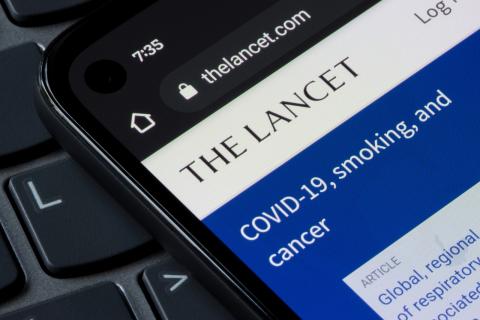Reactions: Remote collaborations in science diminish innovative discoveries
The increase in remote collaboration among scientists is associated with a decrease in innovative discoveries compared to teams working together in person at the same location. These are the conclusions of an analysis of 20 million research articles and four million patent applications published in Nature today.

Jurgen - teams
Jürgen Renn
Director at the Max Planck Institute for the History of Science, Berlin.
Creative scientific collaboration requires spontaneity and liveliness that is only possible in personal encounters. This applies in particular to the parts that cannot be planned, which involve the exploration of new ideas, conceptual questions and the unexpected inclusion of new aspects. Such brainstorming also requires mutual trust and a familiarity that only arises in close proximity. The history of science provides many examples of this; after all, even before digital media, there was the alternative between an exchange from a distance and a direct encounter.
Harry Collins - Teams
Harry Collins
Professor for social science, Cardiff University, UK.
To what extent can the D-score measure how groundbreaking or innovative a study is? How do you assess this measure?
Given that the key to cooperation in science is tacit knowledge, which is embedded in scientific spoken and practical culture, and is transmitted via socialisation, I am very suspicious of studies that use citation patterns as a proxy for knowledge relationships. Scientists cite or do not cite others for a variety of reasons including currying favour or impressing referees. One of the reasons for the ‘replication crisis’ is that research findings gain a spurious validity due to the practice, in many sciences, of ritual citation, encouraged by automatic aids: a large number of citations can make a paper look scholarly whereas nothing really scientific is happening. So, I would not count the D score as something to rely on where knowledge is concerned.
How do you assess the difference in the probability of producing breakthrough research (28% versus 22%)?
This seems to be a case where a huge data base has allowed a level of statistical significance whereas the effect size is embarrassingly small for such a lot of effort. This is not the size of effect one can act on. But I would not have thought the approach, via huge numbers of publications, should be expected to show much given the enormous variation in the quality of published work, especially with the boom in journal publication, with, perhaps, the top 10% at best being useful and worthwhile. I believe the problem is better addressed via participatory and interview methods.
To what extent could the lower proportion of breakthrough research be due to the fact that major breakthroughs in basic research have already taken place?
Given the problems in the approach I would not read too much into it.
How important do you consider the geographical proximity of research teams? In which research areas do you see the transition to remote teams as particularly problematic, and in which less so?
I think face-to-face encounters are vital in science. This is explained in Collins, et al, 2022. The Face-to-face Principle. https://doi.org/10.18573/book7 (open access) and explored via a survey of experiences during the pandemic shut down in Collins, Harry, Leonard-Clarke, Willow and Mason-Wilkes, Will, 2022, ’Scientific conferences, socialisation and lockdown, Social Studies of Science, 53, 3. 379-401 DOI: 10.1177/03063127221138521. But proximity for the transfer of tacit knowledge can be accomplished by a series of international workshops and conferences irrespective of geographical distance. For example, the community of about 1250 gravitational wave detection scientists whose discovery led to a Nobel Prize and which was necessarily located over the entire world, met a few times a year for many years in different locations and this was enough to develop a new ‘practice language’ encapsulating the developing science.
The shortcomings of remote teams become clear in the text: people are involved in fewer subtasks of the research process, the creative part (idea generation) is less frequent, young researchers are less likely to contribute their ideas. What could be done about this?
What is vital is continuing to encourage and support international meetings. There is a class of science where it may not matter. This is science that has become routinised (hypernormal science), by which is meant that socialisation into practices has been completed by the end of a PhD. Molecular biology is an example according to Collins, Harry, et al, 2023. ‘Hypernormal science and its significance’, Perspectives on Science, 31 (2): 262–292
- Research article
- Peer reviewed



